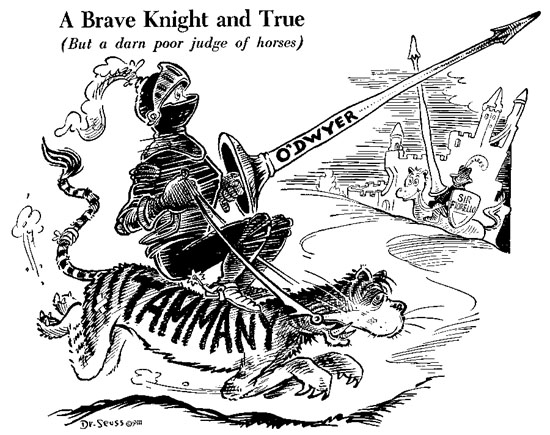Wednesday, November 9
Candy Chang - Before I Die Brooklyn
Before I Die - Brooklyn from charis poon on Vimeo.
Shake Shack used Candy Chang's Before I Die toolkit to turn the construction walls around their new location in Brooklyn into a point of interest and activity.
Located at the corner of Fulton Street Mall and Adams Street.
Read more:
http://candychang.com/before-i-die-in-brooklyn/
http://civiccenter.cc/before-i-die-in-brooklyn/
Music:
Hadoken by Nullsleep
Park Dispute Dating Back to the Moses Days
 |
| Photo by Google Images |
Upended Elephant in Union Square Raises Confusion
 Photo Credit: images © marlborough gallery, new york, courtesy of galerie bruno bischofberger, zurich
Photo Credit: images © marlborough gallery, new york, courtesy of galerie bruno bischofberger, zurichThere is a huge bronze elephant doing a trunk stand on the east side of Union Square, across from Beth Israel and the Au Bon Pain. It was set up in September of 2011 and will “act as a bridge from uptown to downtown” the Union Square Partnership site insists. The elephant is one of 54 temporary art pieces set up throughout the 5 boroughs of New York City. The instillations vary on size and form, some cost very little money to build and other's much more to put into fruition.
Art in the Parks is a government program that decides what art is put up when, and for how long. Temporary art pieces range from about 3 to 6 months. The Program was organized in 1967 in an attempt to "set [art] under the light of day where they intrude upon our daily walks and errands" according to the Art in the Parks website. Many places in the city have temporary instillations. The city gives no funding for the projects so the artists must come up with money to set up and take down the works. Though various grants and awards can be arranged for the artists. Manual labor is not provided by the New York City government.
Commissioner of Parks and Recreation, Adrien Benepe or a representative looks over the proposals that are sent in continuously. He decides how sustainable, durable and safe the art will be on the street. Community boards are called in to accept the proposal, “it’s just part of the procedure,” says Jennifer Lantzas, the Public Art Coordinator for the Parks and Recreation Program
Lantzas is trying to build the art out and immerse it into less lucrative boroughs. "Everyone wants Central Park" she says, "but we try to work with the artists to find a different location. Too much art in Central Park would not have been Olmstead’s vision," she adds. Lantzas hopes that locations will change with the help of the Clare Weiss Emerging Artists Award, introduced this year in honor of the late Clare Weiss who was the Public Art Coordinator until her death in 2010.
The elephant, entitled, 'Gran Elefandret' was constructed in 2008. It stands at 26 feet and weighs about 1/2 ton. This will be the second world class public art instillation in Union Square, a huge change from the regular exhibits in both Central Park and along the Park Avenue Mall.
The Spanish artist, Miquel Barcelo, was born in 1957 and separates his time between Barcelona, Paris and... The sculpture has travelled from Avignon, France and will be teetering in its position until late May. However, there are many complaints already, on the art site, 'Designer Boom,' several people have commented that the sculpture is a copy of another sculpture by the artist Daniel Firman whose piece Wursa at 18,00km from Earth resembles Barcelo's piece. “This is a Daniel Firman piece” one of the comments below says, “how can they allow it??” Another comment simply says “horrendous.”
Lantzas encourages controversy, “that’s the fantastic thing about the project.” She says. “There are people who like them and there are people who don’t.”
Enrique Penalosa: Hope for an Urban Future
 |
| Credit: El Espectador |
That year, Peñalosa decided to run for Mayor of Bogotá using the same campaign strategy as his Congressional win. Again, without the backings of any other officials, he went door-to-door, person-to-person, on foot, a bike, or on public transportation. After two unsuccessful bids, he was finally elected in 1997.
 |
| Credit: StreetsBlog |
The aristocratic sectors of the city view him as a socialist and an idealist. His idea to turn the Bogotá Country Club into a public park was quickly turned down.
Other radical changes include his introduction of the Pico y Placa traffic mitigation policy, which restricts vehicles with license plates ending in certain digits from traveling the streets during certain times. As of July 2011, four digits are restricted each day between 6 AM and 8 PM, forcing drivers to take public transportation, carpool, or bike during those hours. The traffic congestion has since been reduced by forty percent.
“I was almost impeached by the car-owning upper classes,” Peñalosa remembered, “but it was popular with everyone else.”
In 2009, he was elected President of the Board of Directors of the Institute for Transportation and Development Policy, New York-based group promoting sustainable transportation in the developing world. Many hope that his presence and leadership in New York urban planning grows, despite his desires to return to Bogotá as a Green Party Candidate for Mayor.
From the Frozen Food Aisle to Fifth Avenue: Canadian Retail Chain Joe Fresh Opens in New York City
 |
| Joe Fresh founder Joseph Mimran and Elle Creative Director Joe Zee |
Tuesday, November 8
Giving Up and Going Home
 |
| According to a study done by Twentysomething Inc., %85 of college graduates move back in with their parents. This %85 now includes Andy Rautins. |
Cyclist Deaths Put NYPD Under Fire
| Transportation Alternatives Director Paul Steely White (middle) and Mathieu Lefevre's family (right) at the press conference on October 26th. (photo: BikeNYC) |
The NYPD’s ultimate decision to not press charges against the driver came as a shock to the victim’s family, who held a press conference on October 26th outside the NYPD headquarters. “We want to know what happened to our son, and the police are not telling us anything,” the victim’s mother, Erika Lefevre said. Paul Steely White, the director of Transportation Alternatives, also spoke at the gathering and expressed concerns towards the police department’s way of handling cyclist accidents. The official statement which NYPD released about October 18’s accident offered a grim conclusion: “There was no criminality involved. That’s why they call it an accident.”
The police department’s dismissive attitude towards the cyclist death is not a unique occurence; since August, four bikers have been killed in Williamsburg but no charges have been pressed in any of the cases. On August 3rd, 29-year-old Robert Doyle was hit by a truck on Metropolitan Ave when he was trying to pass it on his bike. On August 30th, Erica Abbott, also 29, was riding on Bushwick Ave when she hit a pile of construction debris, fell off her bike and was run over by a car. On September 2nd, 24-year-old Nicolas Djandji was fatally struck by an SUV while cycling on Roebling Street. According to investigations, Djandji ran a red light - according to witnesses, however, if Djandji ran a red light then the driver must have too. The drivers were not charged in any of the cases. At the Lefevre press conference on October 26, Transportation Alternatives called driver negligence and NYPD ignorance an epidemic. “The NYPD has consistently failed to file charges against drivers for their lethal behavior,” the director said.
Erika Lefevre’s fight for justice for his son has not received a response from authorities so far, but she is not alone in her battle. Transportation Alternatives are approaching the subject fiercely, and a statement released shortly after Mathieu Lefevre’s death showed a plea for change: “The NYPD's blame the victim attitude reveals their disheartening acceptance of traffic violence,” the statement read. TA encourages cycling New Yorkers to take action and contact Police Commissioner Ray Kelly directly with a letter they provide on their website. “Commissioner Kelly, more people are killed in traffic than murdered by guns in New York City,” the letter says and asks Kelly to add more resources to the Accident Investigation Squad and commit to a goal of less - preferably none - cyclist and pedestrian deaths in New York City. NYPD and Commissioner Kelly’s office refused to comment.
A Way to Make A Living: Operate a Green Cart
 |
| Mohammad Ali Ashraf with his Green Cart and van. |
 |
| The produce from Ashraf's Green Cart comes from a provider in Huntspoint, Bronx. |
Sunday, November 6
The Power Broker: Chapter 32
 |
| (photo courtesy: http://www.merriam-webster.com/dictionary/quid%20pro%20quo) |
 |
| Mayor William O'Dwyer (Tammany-backed), the 100th mayor of New York City (photo courtesy: http://www.irishamericanmuseumdc.org/online-library/article/william-o-dwyer) |
 |
| Cartoon from 1941 (photo courtesy: http://libraries.ucsd.edu/speccoll/dspolitic/TammanyHall.html) |
The Power Broker: Chapter 31
 |
| Ole Singstad of the New York City Tunnel Authority and chief engineer of the Brookyln-Batter Project (photo courtesy: http://hemneslekt.net/histories/img/singstad_2.jpg) |
 |
| Building the Queens-Midtown Tunnel in 1939, designed by Ole Singstad (photo courtesy: http://www.cloutonline.com/2010/01/queens-midtown-tunnel-1939/) |
 |
| Brooklyn-Battery Tunnel as it was partly built in 1944 (photo courtesy: http://ephemeralnewyork.wordpress.com/tag/brooklyn-battery-tunnel/) |
 |
| In 1946, Robert Moses' Triborough Authority swallows the New York Tunnel Authority |
The Power Broker: Chapter 30
CHAPTER 30: REVENGE |
| A Summer Scene at Batter Park (postcard, 1917): Castle Garden Fort & The New York Aquarium (http://ephemeralnewyork.wordpress.com/2011/06/08/a-summer-scene-at-battery-park-in-1917/) |
 |
| Castle Clinton, once the site of the New York Aquarium, housed America's first captive Beluga Whale (info courtesy of: http://www.nps.gov/cacl/index.htm; photo courtesy: http://aquaviews.net/wp-content/uploads/2009/07/Beluga-Whale.jpg) |
 |
Castle Clinton
(photo courtesy of: http://nyc-architecture.com/LM/LM003-CASTLECLINTON.htm)
|
 |
| George McAneny, traditionalist reformer who fought Moses to save Fort Clinton (photo courtesy of: http://www.corbisimages.com/stock-photo/rights-managed/U167970INP/george-mcaneny-holding-a-shovel) |
 |
| New York Aquarium at Coney Island (photo courtesy of: http://www.inetours.com/New_York/Brooklyn/photos/NY-Aquarium.html) |
 |
| Admissions fee to the New York Aquarium--thanks to Robert Moses |
 |
| Manhattan entrance to the Brooklyn-Battery Tunnel which runs directly under Castle Clinton (photo courtesy: http://www.mta.info/bandt/html/bbt.html) |
Roosevelt Island's Transformation in Pictures
 |
| Photo courtesy of Stanford University Stanford’s plans call for building a marsh to filter water, extensive use of solar and geothermal power, and recycling water from storm drains. |
 |
| Photo courtesy of Cornell University Cornell’s plans include four acres of solar panels, and will generate more energy than it uses. |
 |
| Some of the facilities from the hospital have been around as early as the late 1930s. Roosevelt Island, originally named Welfare Island, has long been home to many who need chronic care. |
 |
| The Roosevelt Island Tramway connects the island to Manhattan. The tram began operation in 1976, and since than has ferried 26 million passengers across the East River. |
 |
| The Ed Koch Queensboro Bridge, completed in 1909, connects the neighborhood of Long Island City in the borough of Queens with Manhattan, passing over Roosevelt Island. |
 |
| An advertisement for Riverwalk Condos, one of the newest high rise condos on Roosevelt Island that has angered many of its residents. |
 |
| A sign above one of Coler-Goldwater’s lab entrances. Many of these buildings will need serious renovations in order to meet the standards set forth by the school’s proposals. |











